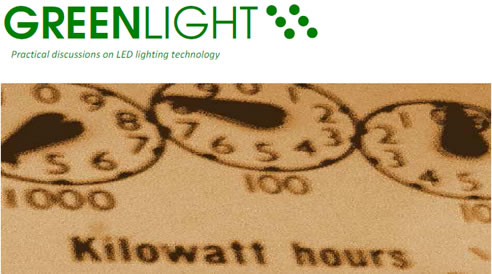NEWS ARTICLE ARCHIVESReducing Power Bills with LED Lights from Creative LED Systems WHAT DO YOUR LIGHTS REALLY COST YOU EACH YEAR...? Often I am amazed how people complain about how much of their hard earned dollars are going on their power bills- yet have no ideas on where its all going.....or how to fix it. In this edition of Greenlight, we will be discussing how to review your current lighting usage, learn how to calculate the costs of your lights, and make some changes that will benefit not only your wallet, but also the environment - so let's get started... THERE ARE four MAIN COMPONENTS OF A RESIDENTIAL POWER BILL
In this article we are only concerned about item 1- Lights, however as we are specifically targeting LED lighting, this will have a profound effect on item 2 - Air Conditioning - more on that later.... We all know by now the immense benefits of LED lighting, but in case you are not up to speed just yet, here is a brief overview:
So how are we charged for our lights at the moment? You get charged by the Kilowatt-hour (kWh) by the power companies and the rates vary substantially. This means that the AMOUNT of power you use in 1 hour is what you pay....obviously its better to use less than more. Some corporations and business' lock in the rate they negotiate with the power companies for a few years in advance. In some areas, governments are giving incentives for reduced power rates through various schemes to 'green 'the building. By using such things as insulation and switching to LED lights, significant savings can be achieved (less kWh) and these types of buildings are then rewarded by reduced power rates. How do I calculate how many kWh I'm using for each light ...? The formula for calculating the yearly kilowatt hrs is very easy. You just need to do the following for each light type. For example halogen down lights, fluro tubes, outdoor floodlights etc all need to be calculated separately so as not to be too confusing.
Step 1.
Step 2
Step 3 THE QUANTITY OF LIGHTS MULTIPLIED BY THE WATTAGE OF THE LIGHT MULTIPLIED BY YEARLY HOURS USED For example:
8760 is 24/7 i.e. (24hrs a day /7 days a week) DIVIDED BY 1000 So using the example in step 2 it would be: 15 (lights) x 50 (watts) x 2920 (hours) DIVIDED BY 1000 = 2190 kwh per year.
Step 4 Step 5 Find out what your kwh rate is. This is printed on your electricity bill and there are different kwh rates for lights, appliances and hot water - so make sure you use the correct rate. For example in Sydney Australia where I live - the rate is 0.18 p kwh
Step 6 In our example above that's 2190 x $0.18 = $394.20 That's all pretty easy and its amazing how much lights cost per year to run...but that's not the end of it. Don't forget you have to replace the lights you just counted every 1-5000 hours so you have to add the cost of the bulbs here too. What if you could reduce that figure by over 75% year in year out for the next 10 years? Well that's exactly what happens with LED lights. therefore, instead of costing $394 to run 15 halogens 8 hrs a day, the figure would be around $47 using our 5.4-watt equivalent....and there's no having to replace them for more than 10 years. Best of all now there is an equivalent LED for every type of conventional globe or light, even brake lights on your car! Finally ,remember back in the beginning we talked about Air conditioners ?....well here's another great reason to switch to LED....it turns out that traditional incandescent technology only provides 10% light and the remaining 90% energy is heat that adds thermal load to an air conditioning system. In warmer climates, the heat load of incandescent lamps on the Air Conditioning system can be as much as 400% greater than with LED. Therefore, with LED, significant reduction in air conditioning load can result in lower energy costs including lowered peak demand charges. If you want to learn more drop us a line at info@creativeledsystems.com and we'll be very happy to answer any questions you may have. Meanwhile look out for our next issue of GREENLIGHTS next month. Until then - Paul Ellis |
 |
 |